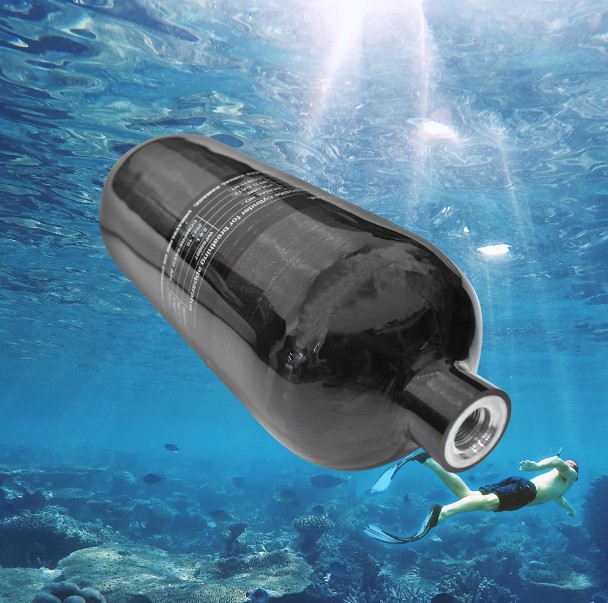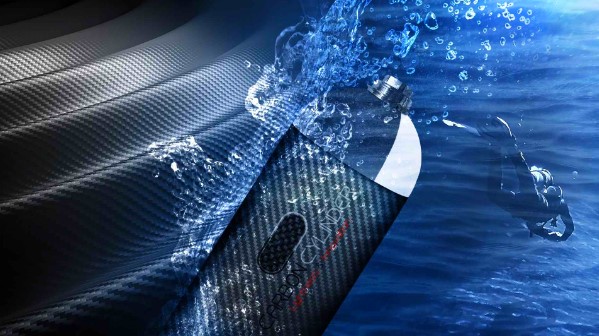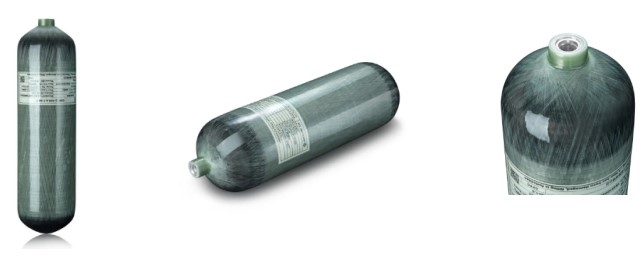Carbon fiber has become increasingly popular in various industries due to its high strength-to-weight ratio, durability, and resistance to corrosion. One key question that arises in specific applications, such as marine or underwater use, is whether carbon fiber can effectively perform under such conditions. Specifically, can carbon fiber composite cylinders function safely and efficiently underwater? The answer is yes, carbon fiber can indeed be used underwater, and its unique properties make it an ideal material for underwater applications such as diving, underwater robotics, and marine equipment.
In this article, we will explore how carbon fiber composite cylinders are designed, their performance in underwater conditions, and why they are advantageous in comparison to other materials like steel or aluminum. The content will focus on carbon fiber composite cylinders, which play a significant role in many underwater activities.
The Design of Carbon Fiber Composite Cylinders
Carbon fiber composite cylinders are made using a high-strength carbon fiber material wrapped around an internal liner, typically made from aluminum (in Type 3 cylinders) or plastic (in Type 4 cylinders). These cylinders are lightweight, strong, and capable of storing high-pressure gases, such as oxygen for diving or compressed air for industrial applications. Their ability to handle immense pressure makes them ideal for use in harsh environments, including underwater settings.
The construction of carbon fiber cylinders involves multiple layers of carbon fiber material being wound around the inner liner in a specific manner. This not only provides the necessary strength but also ensures that the cylinders remain durable under extreme conditions. Additionally, an outer protective coating helps protect the cylinder from external elements like impact, corrosion, or the wear and tear that might occur during underwater use.
How Carbon Fiber Performs Underwater
One of the key benefits of carbon fiber is its resistance to corrosion. Unlike steel, which can rust and degrade when exposed to water over time, carbon fiber does not react negatively with water, even when submerged for extended periods. This property makes it highly suitable for underwater applications where longevity and reliability are crucial.
In underwater environments, materials must withstand not only moisture but also high pressures, particularly in deep-sea applications. Carbon fiber excels in such conditions due to its tensile strength, which enables it to withstand the immense pressure exerted by water at depth. Moreover, the weight advantage of carbon fiber compared to materials like steel or aluminum makes it easier to handle and maneuver underwater, providing increased efficiency for divers or automated marine systems.
Applications of Carbon Fiber Cylinders in Underwater Use
Carbon fiber cylinders are used in a wide range of underwater applications. One common use is in SCUBA (self-contained underwater breathing apparatus) tanks, where lightweight and corrosion-resistant materials are essential for divers’ safety and convenience. The carbon fiber composite cylinder allows for greater maneuverability underwater while also ensuring that the tank can withstand the pressures experienced at different depths.
Carbon fiber cylinders are also used in underwater robotics, where equipment needs to be both strong and lightweight to operate effectively in challenging conditions. In this context, carbon fiber’s durability and resistance to environmental stressors like saltwater corrosion make it an invaluable material.
Another area where carbon fiber cylinders shine is in marine exploration and research. When designing equipment to operate at the bottom of the ocean, weight and strength are critical. Carbon fiber’s ability to combine high strength with low weight helps ensure that research submersibles and other underwater vehicles can reach great depths while carrying sophisticated scientific instruments without compromising performance.
Advantages of Carbon Fiber Composite Cylinders in Underwater Use
- Lightweight and Strong: Carbon fiber is known for its incredible strength-to-weight ratio. This is a significant advantage in underwater use where buoyancy and ease of handling are essential. The reduced weight also helps lower transportation costs, whether it’s for individual divers or large-scale marine operations.
- Corrosion-Resistant: As mentioned earlier, carbon fiber does not corrode when exposed to water, making it a durable choice for long-term underwater use. In contrast, steel cylinders may suffer from rust, requiring more frequent maintenance or replacement in marine environments.
- High Pressure Tolerance: Carbon fiber composite cylinders can withstand extremely high pressures, which is vital in underwater applications, especially in deeper regions where water pressure increases. This property makes carbon fiber suitable for use in SCUBA diving tanks, deep-sea exploration, and other high-pressure environments.
- Cost-Effective in the Long Run: While carbon fiber cylinders may have a higher upfront cost compared to traditional materials like steel or aluminum, their longevity and resistance to corrosion often make them more cost-effective over time. Fewer replacements and less maintenance mean long-term savings for individuals and organizations that use them in underwater operations.
- Versatility: The versatility of carbon fiber cylinders extends beyond underwater applications. They are also used in aerospace, automotive, and industrial sectors, highlighting their broad adaptability and robust nature in various demanding environments.
Challenges and Considerations
Although carbon fiber has many advantages, there are a few considerations to keep in mind. One of the main concerns is the initial cost. Carbon fiber composite cylinders are generally more expensive than their steel or aluminum counterparts, which can be a barrier for some users. However, this cost is often offset by the longer lifespan and reduced maintenance requirements, especially in harsh environments like underwater settings.
Additionally, while carbon fiber is strong, it is also brittle compared to materials like steel. This means that impact damage (e.g., dropping the cylinder) could result in fractures that might not be immediately visible. Therefore, regular inspection and proper handling are crucial to ensure the longevity and safety of carbon fiber cylinders in any environment, including underwater.
Conclusion: A Versatile Solution for Underwater Applications
In conclusion, carbon fiber can indeed be used underwater, and its properties make it particularly well-suited for applications that demand strength, lightweight materials, and resistance to corrosion. Whether used in SCUBA tanks, underwater robotics, or marine research, carbon fiber composite cylinders provide a reliable and efficient solution for operating in challenging aquatic environments.
The ability of carbon fiber to withstand high pressures and resist environmental stressors like water and salt corrosion, coupled with its lightweight nature, positions it as a top choice for underwater use. As the demand for advanced materials in marine and diving applications grows, carbon fiber will likely continue to play a critical role in ensuring both the performance and safety of equipment used below the surface.
Post time: Oct-09-2024



